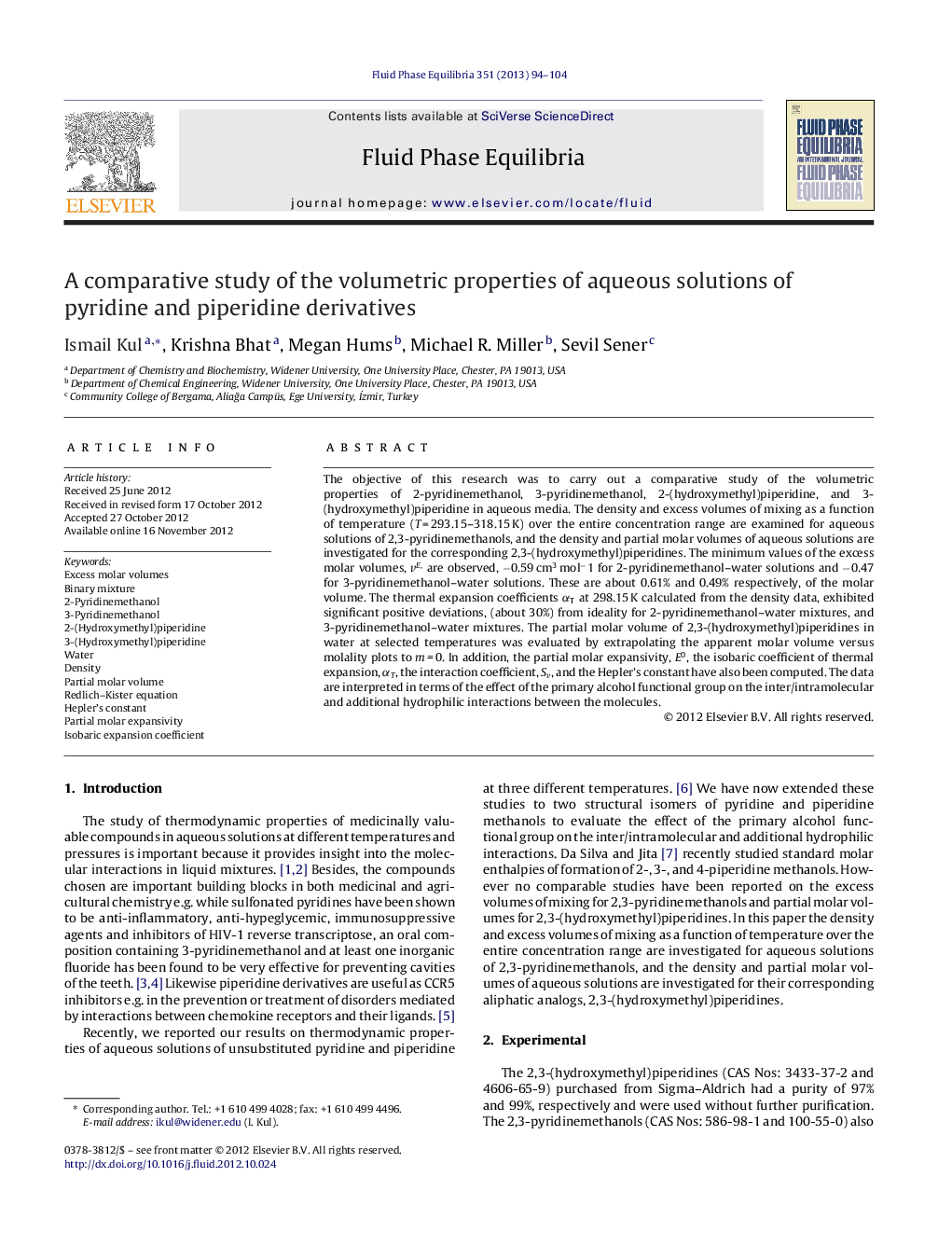| Article ID | Journal | Published Year | Pages | File Type |
|---|---|---|---|---|
| 201512 | Fluid Phase Equilibria | 2013 | 11 Pages |
The objective of this research was to carry out a comparative study of the volumetric properties of 2-pyridinemethanol, 3-pyridinemethanol, 2-(hydroxymethyl)piperidine, and 3-(hydroxymethyl)piperidine in aqueous media. The density and excess volumes of mixing as a function of temperature (T = 293.15–318.15 K) over the entire concentration range are examined for aqueous solutions of 2,3-pyridinemethanols, and the density and partial molar volumes of aqueous solutions are investigated for the corresponding 2,3-(hydroxymethyl)piperidines. The minimum values of the excess molar volumes, vE, are observed, −0.59 cm3 mol−1 for 2-pyridinemethanol–water solutions and −0.47 for 3-pyridinemethanol–water solutions. These are about 0.61% and 0.49% respectively, of the molar volume. The thermal expansion coefficients αT at 298.15 K calculated from the density data, exhibited significant positive deviations, (about 30%) from ideality for 2-pyridinemethanol–water mixtures, and 3-pyridinemethanol–water mixtures. The partial molar volume of 2,3-(hydroxymethyl)piperidines in water at selected temperatures was evaluated by extrapolating the apparent molar volume versus molality plots to m = 0. In addition, the partial molar expansivity, E0, the isobaric coefficient of thermal expansion, αT, the interaction coefficient, Sv, and the Hepler's constant have also been computed. The data are interpreted in terms of the effect of the primary alcohol functional group on the inter/intramolecular and additional hydrophilic interactions between the molecules.
► Thermodynamic properties of 2,3-pyridinemethanols in water have been studied. ► Thermodynamic properties of 2,3-piperidine methanols in water have been studied. ► The minimum values of vE, are observed for 2,3-pyridinemethanols–water solutions. ► The partial molar volume of 2,3-piperidine methanols in water was evaluated. ► Analysis of the data indicates the structure promoting tendency behavior of solutions.
